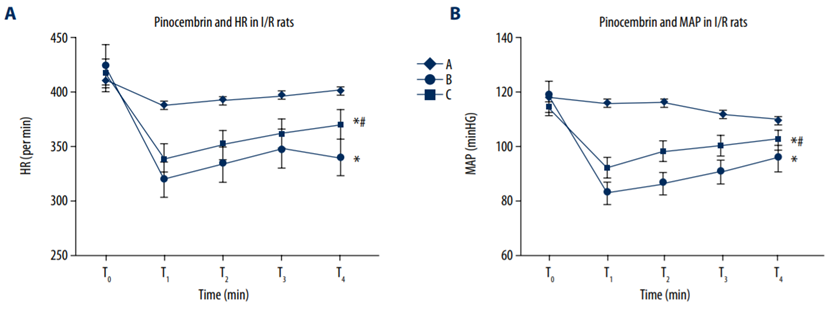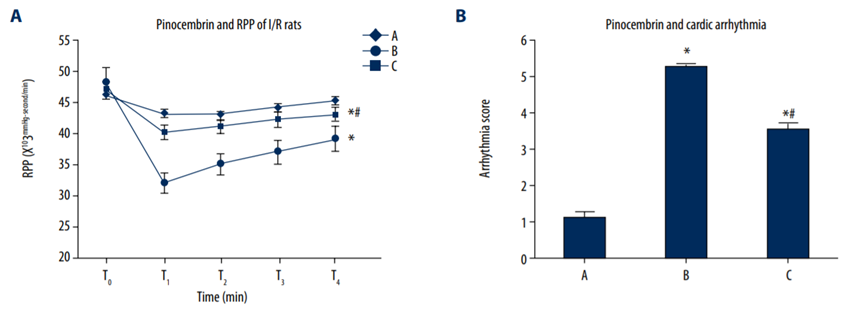Cardiac Arrhythmia Model
Cardiac arrhythmias are identified as an abnormal activation or beating of heart myocardium. The primary factors of arrhythmia, including myocardial injury, mechanical stress, neurohormonal activation, inflammation, and/or aging, result in cardiac remodeling, which is responsible for cardiac dysfunction and arrhythmogenesis. Dizziness, palpitations, fast heart beating, and feeling of weakness are the main symptoms of arrhythmia. In recent years, the incidence of arrhythmia has been rising rapidly worldwide. Therefore, the development of targeted treatment strategies for cardiac arrhythmia is necessary.
Creative Bioarray offers you cardiac arrhythmia model to help you understand the pathological mechanisms of arrhythmia and test the efficacy of novel drugs against it.
Our Capabilities
- We screen novel drugs against cardiac arrhythmia.
- We monitor blood pressure (BP) of rats/mice by tail-cuff.
Assays available
- PK/PD collection
- Biochemical analysis
- Pathological evaluation
With extensive experience in the field of cardiac arrhythmia, we are confident to help you to overcome any upcoming challenges. Our experts are fully capable of customizing our protocols and assays to meet your specific needs. With our help, we wish to facilitate your research with high efficiency.
Study examples
 Figure. 1. Effects of pinocembrin on HR and MAP of I/R rats. T0 – 10 min before ischemia; T1 – 30 min after ischemia; T2 – 30 min after reperfusion; T3 – 60 min after reperfusion; T4 – 120 min re-perfusion. HR – heart rate; MAP – mean artery pressure. A – Sham group; B – model group; C – pinocembrin group.
Figure. 1. Effects of pinocembrin on HR and MAP of I/R rats. T0 – 10 min before ischemia; T1 – 30 min after ischemia; T2 – 30 min after reperfusion; T3 – 60 min after reperfusion; T4 – 120 min re-perfusion. HR – heart rate; MAP – mean artery pressure. A – Sham group; B – model group; C – pinocembrin group.
 Figure. 2. Effects of pinocembrin on I/R rat RPP and cardiac arrhythmia. T0 – 10 min before ischemia; T1 – 30 min after ischemia; T2 – 30 min after reperfusion; T3 – 60 min after re-perfusion; T4 – 120 min reperfusion. RPP – rate pressure product. A – sham group; B – model group; C – pinocembrin group.
Figure. 2. Effects of pinocembrin on I/R rat RPP and cardiac arrhythmia. T0 – 10 min before ischemia; T1 – 30 min after ischemia; T2 – 30 min after reperfusion; T3 – 60 min after re-perfusion; T4 – 120 min reperfusion. RPP – rate pressure product. A – sham group; B – model group; C – pinocembrin group.
Quotation and ordering
If you have any special needs or questions regarding our services, please feel free to contact us. We look forward to cooperating with you in the future.
Reference
Zhang P , Xu J , Hu W , et al. Effects of Pinocembrin Pretreatment on Connexin 43 (Cx43) Protein Expression After Rat Myocardial Ischemia-Reperfusion and Cardiac Arrhythmia[J]. Medical Science Monitor International Medical Journal of Experimental & Clinical Research, 2018, 24:5008-5014.
For research use only. Not for any other purpose.
Disease Models
- Oncology Models
-
Inflammation & Autoimmune Disease Models
- Rheumatoid Arthritis Models
- Glomerulonephritis Models
- Multiple Sclerosis (MS) Models
- Ocular Inflammation Models
- Sjögren's Syndrome Model
- LPS-induced Acute Lung Injury Model
- Peritonitis Models
- Passive Cutaneous Anaphylaxis Model
- Delayed-Type Hypersensitivity (DTH) Models
- Inflammatory Bowel Disease Models
- Systemic Lupus Erythematosus Animal Models
- Oral Mucositis Model
- Asthma Model
- Sepsis Model
- Psoriasis Model
- Atopic Dermatitis (AD) Model
- Scleroderma Model
- Gouty Arthritis Model
- Carrageenan-Induced Air Pouch Synovitis Model
- Carrageenan-Induced Paw Edema Model
- Experimental Autoimmune Myasthenia Gravis (EAMG) Model
- Graft-versus-host Disease (GvHD) Models
-
Cardiovascular Disease Models
- Surgical Models
- Animal Models of Hypertension
- Venous Thrombosis Model
- Atherosclerosis model
- Cardiac Arrhythmia Model
- Hyperlipoidemia Model
- Doxorubicin-induced Heart Failure Model
- Isoproterenol-induced Heart Failure Model
- Arterial Thrombosis Model
- Pulmonary Arterial Hypertension (PAH) Models
- Heart Failure with Preserved Ejection Fraction (HFpEF) Model
-
Neurological Disease Models
- Alzheimer's Disease Modeling and Assays
- Seizure Models
- Parkinson's Disease Models
- Ischemic Stroke Models
- Acute Spinal Cord Injury (ASCI) Model
- Traumatic Brain Injury (TBI) Model
- Hypoxic-Ischemic Encephalopathy (HIE) Model
- Tourette Syndrome (TS) Model
- Amyotrophic Lateral Sclerosis (ALS) Model
- Huntington's Disease (HD) Model
- Intracerebral hemorrhage (ICH) Models
- Schizophrenia Model
- Pain Models
-
Metabolic Disease Models
- Type 1 Diabetes Mellitus Model
- Type 2 Diabetes Mellitus Model
- Animal Model of Hyperuricemia
-
Nonalcoholic Fatty Liver Disease Model
- High-Fat Diet-Induced Nonalcoholic Fatty Liver Disease (NAFLD) Model
- Methionine and Choline Deficient (MCD) Diet-Induced Nonalcoholic Fatty Liver Disease (NAFLD) Model
- Gubra-Amylin NASH (GAN) Diet-Induced Nonalcoholic Fatty Liver Disease (NAFLD) Model
- Streptozotocin (STZ) Induced Nonalcoholic Fatty Liver Disease (NAFLD) Model
- High Fat Diet-Induced Obesity Model
- Diabetic Foot Ulcer (DFU) Model
- Liver Disease Models
- Rare Disease Models
- Respiratory Disease Models
- Digestive Disease Models
-
Urology Disease Models
- Cisplatin-induced Nephrotoxicity Model
- Unilateral Ureteral Obstruction Model
- 5/6 Nephrectomy Model
- Renal Ischemia-Reperfusion Injury (RIRI) Model
- Diabetic Nephropathy (DN) Models
- Passive Heymann Nephritis (PHN) Model
- Adenine-Induced Chronic Kidney Disease (CKD) Model
- Kidney Stone Model
- Doxorubicin-Induced Nephropathy Model
- Orthotopic Kidney Transplantation Model
- Orthopedic Disease Models
- Ocular Disease Models
- Skin Disease Models
- Infectious Disease Models
- Otology Disease Models